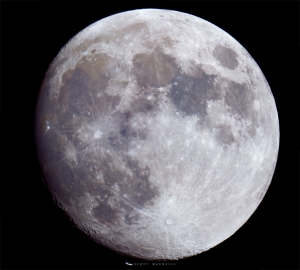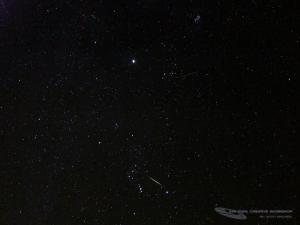
Stargazing Nights
- Where:
- Frosty Drew Observatory
- When:
- Friday October 14, 2016 at 6:30 p.m.
- Cost:
- $1 Suggested Donation per Person
Tonight is Stargazing Night at Frosty Drew Observatory and it looks like we are in for another fabulous night out under the stars! Forecasts are calling for clear skies and cold temps all night long. Though clear skies will rock our night, the super bright 97% waxing gibbous Moon will outshine all but the brightest stars. Hey, I’ll take bright moonlight and clear skies any day over clouds, and tonight will be a night to celebrate the Moon.
We will open the Observatory and Sky Theatre at 6:30 p.m. Our night starts off in the Observatory with a super fast view of Venus, which is rising higher in the western twilight sky with each passing night, followed by late season views of Saturn’s rings. Once Saturn extends out of our view we will direct the big telescope towards the Moon, bright binary stars, and Uranus. Telescopes in the Observatory courtyard will showcase many fabulous binary stars and wide field views of the Moon. In the Sky Theatre temps will be warm with our popular showcase of celestial objects photographed at Frosty Drew Observatory featured on the big screen. We will stay open until around 11:30 p.m. before the Moon chases us out.
Overall, tonight’s super clear skies will make for an excellent night to be out. The super bright Moon will certainly dominate the sky making for non-existent views of the fading Milky Way and other dim objects, but the planets and bright stars will make for killer views. Temps will drop very quickly after sunset, quickly diving into the 40’s and eventually the 30’s overnight. Dressing properly will make the difference between a cold, miserable night and a fabulous night out under the stars. Boots, jacket, hat, and possibly gloves should be on your list of things to bring. We’ll post updates to our Twitter (@FrostyDrewOBSY) and Facebook throughout the night with a “Closing up” message when we decide to pack up. If the Moon is your delight, then tonight is your night. So put Frosty Drew on your Awesome Friday list and catch up with the Moon and all the amazing things happening in the night sky, tonight!
-------------------------------------------------------------------------
Weekly Happenings
Scott MacNeill
Tomorrow night (Saturday, October 15), Earth and Uranus will align with the Sun in a configuration where Uranus will be on the opposite side of Earth than the Sun. This is called “opposition” and happens once per year. During opposition, Uranus will be in full sunlight and visibly at its brightest for the year when viewed from Earth. Opposition also marks Uranus’ closest approach to Earth for our year at 1,761,617,000 miles distant (157 light minutes). Being on the opposite side of Earth than the Sun, Uranus will rise at sunset and set at sunrise, reaching its highest point in our sky at midnight. This all makes the nights around opposition the best time of our year to view Uranus. Though not quite naked eye visible, Uranus is easily visible in a small telescope. So make a point to stop in at Frosty Drew over the next month and check out Uranus’ blue hue and faint moons.
Yesterday’s scheduled launch (Thursday, October 13) of the Orbital ATK CRS-5 ISS resupply mission was canceled due to hurricane Nicole’s impact on Bermuda, where the launch tracking system resides. The launch has been rescheduled for this weekend on Sunday, October 16th at 8:03 p.m. with a 5 minute launch window. This is a notable launch for all northeastern US coastal areas because it will be visible. In Southern New England, the Antares rocket will become visible about 2-3 minutes after launch rising between 5° and 10° over the southern horizon. So set out Sunday evening for a spot with a clear view of the southern horizon (this is easy in RI, Southeast MA, and southern CT), be in place about 15-30 minutes before launch and look south. Check out these visibility maps of the launch.
This coming Thursday – Friday (October 20-21) the Orionid Meteor Shower will peak. Bringing with it upwards of 20 meteors per hour, the Orionid shower is one of the better meteor displays of the autumn season. This year we will have a bright third quarter Moon rising around midnight to thwart our views, though some of the brighter meteors will blaze through. The Orionid shower is the result of Earth passing through the debris field left behind by Halley’s Comet. To catch the shower, head out to a dark location with a wide open view of the sky (minimal trees and buildings), lay on your back with your feet to the East and look towards the zenith (top of the sky). Meteors will radiate from the constellation Orion and will streak across the sky. If you catch a photo of an Orionid (or any other) meteor, be sure to post it on our Facebook and we’ll share it on our time line. Happy meteor watching!
-Scott


